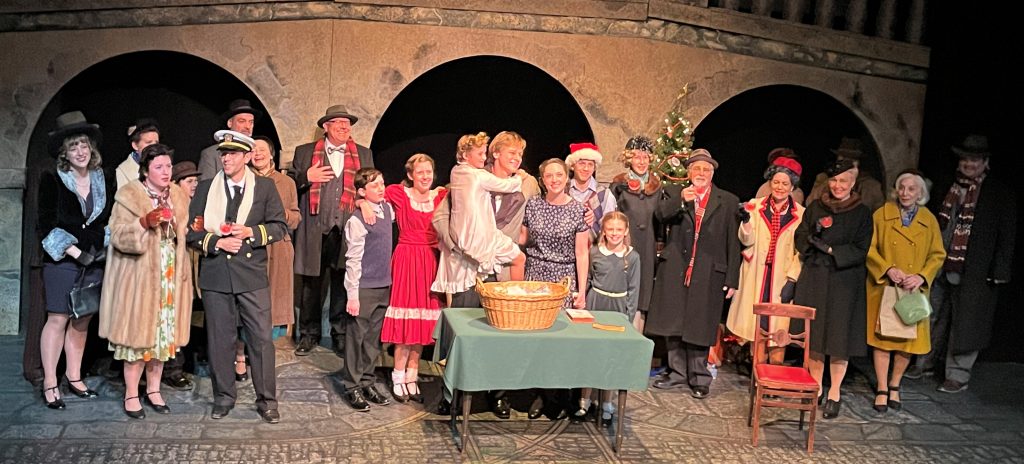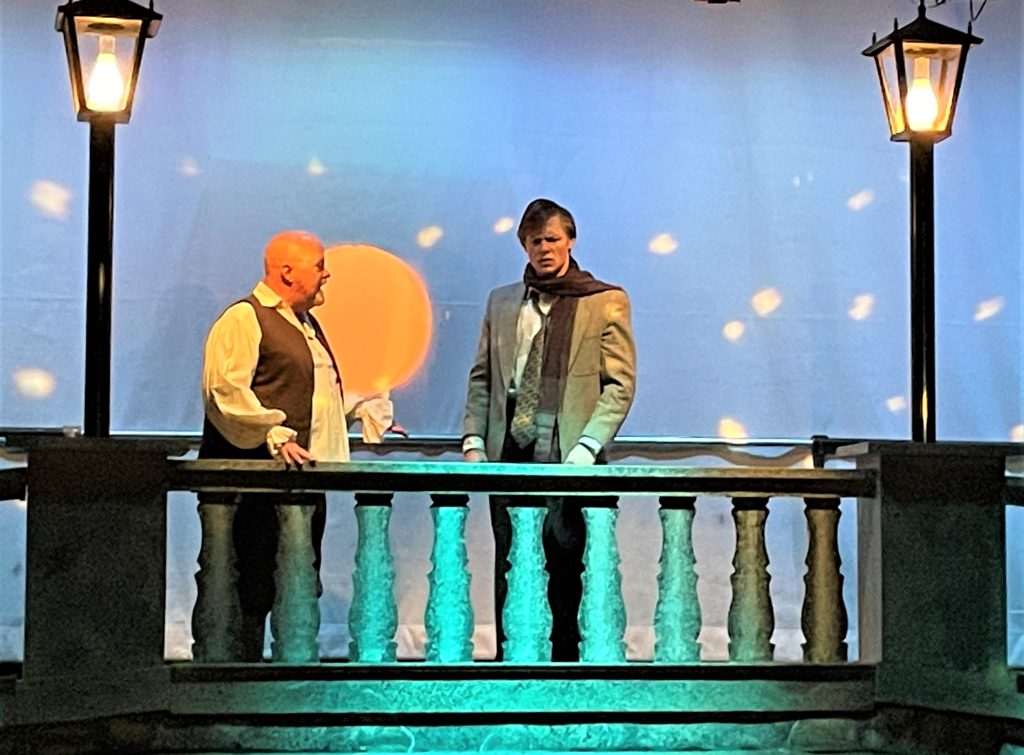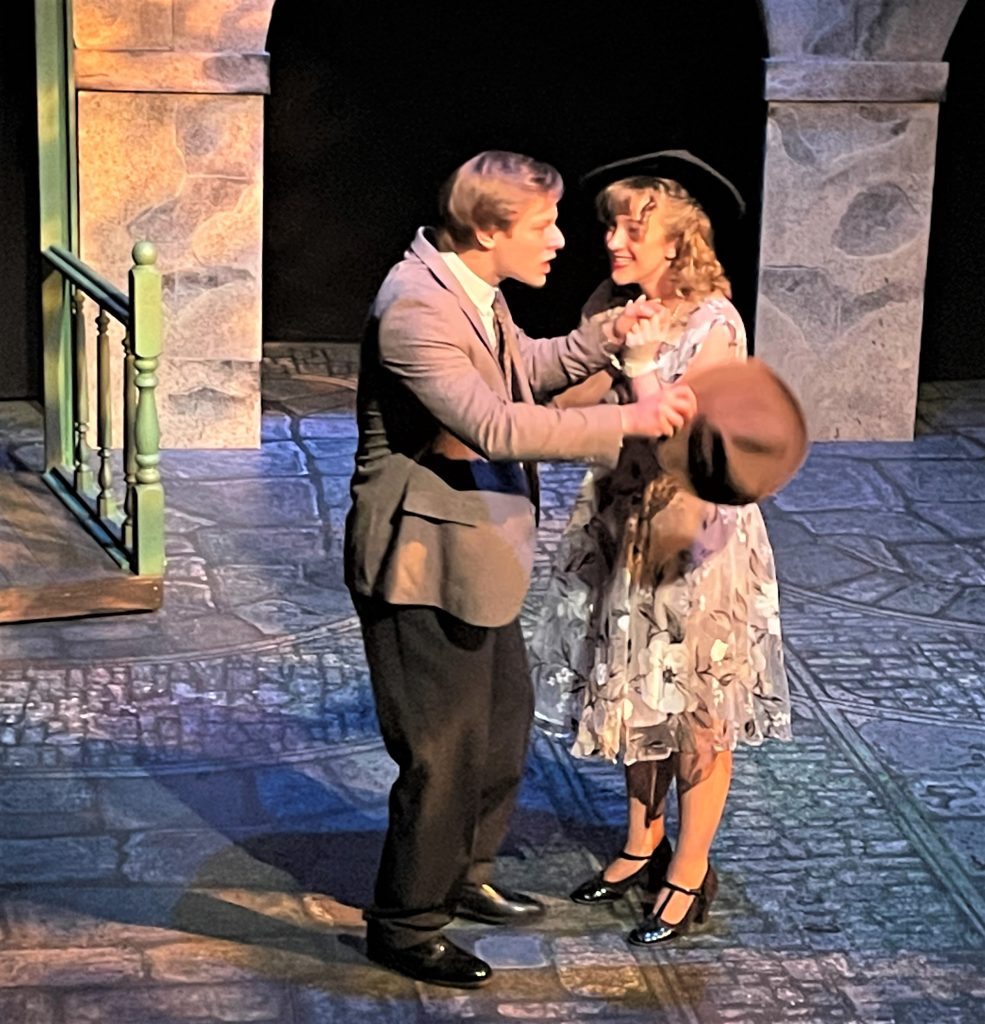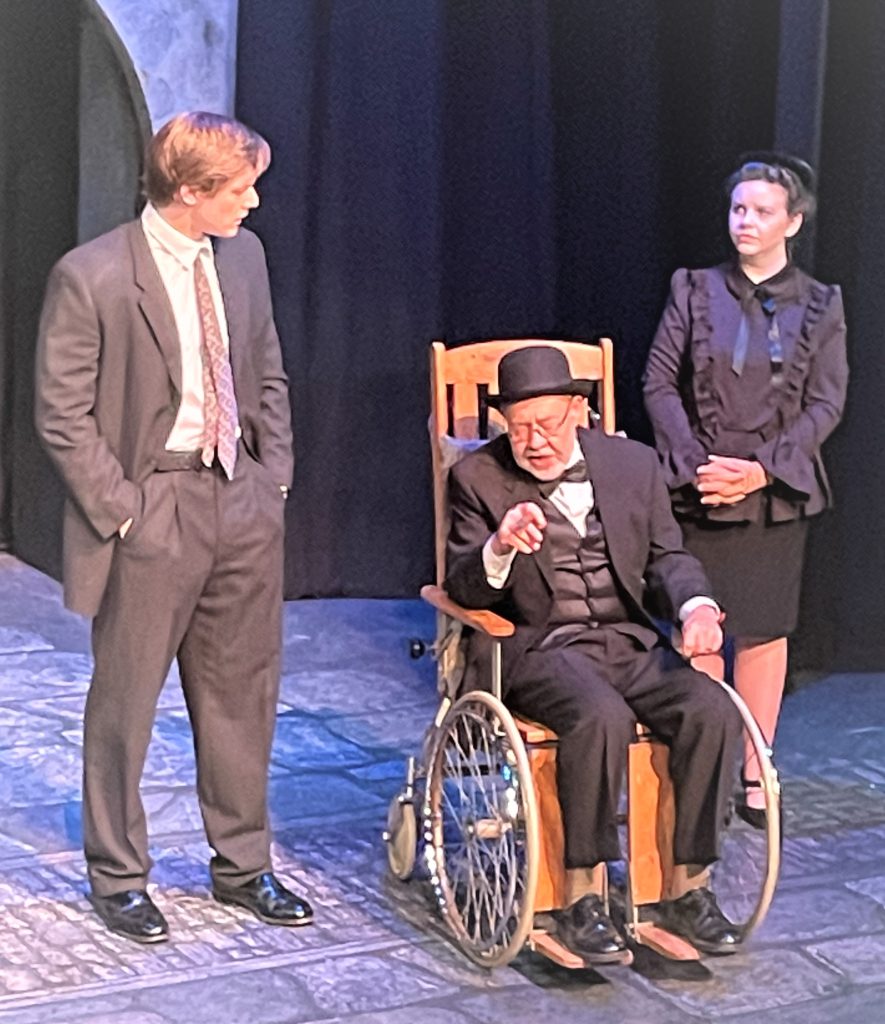
by Kevin T McEneaney
Yes, life, theater, and Christmas can be wonderful! The Center for Performing Arts in Rhinebeck is producing a stage version of Frank Capra’s 1946 classic film, which was a flop at the box office, yet is now recognized as a great American classic—originally based upon a self-published booklet by historian Philip Van Doren Stern titled The Greatest Story (1943). The concept of the work offers an updated American version of Charles Dickens’ 1843 classic novella A Christmas Carol with a sociological twist. The play is set in a small upstate New York town between 1930 and 1945.

While the play has a large cast, four principal characters dominate the play: George Bailey (consummately played by Michael Risio, an upcoming actor who is enjoying his third performance at The Center); his wife charmingly played with verse and sensitivity by Madison Anthony; an insecure, endearing angel played superbly by Jim Hammill; and lastly the formidable Lou Trapani (one of the nicest men one might meet) as the thoroughly villainous, Scrooge-like banker. Mia Yanofsky, as the flirtatious young girl turned grasping floozy, is also impressive. Stephany Hitchcock shines deftly as the mother/grandmother who behind the curtains guides children to a better future. A flock of well-rehearsed lively children enhance the sentimental melodrama centered around the moral spirit of Christmas; yes, it is sentimental and often corny, but the sentiment is well-earned, plus it also has a contemporary resonance, which it did not carry ten to thirty years ago—so this a revival with relevant pinch!

Like the Dickens classic, the play is a parable fantasy with flashbacks of what could have happened if one person had acted differently. To Stern the redemption of Scrooge was an unrealistic fantasy that excused the exploitation of the working classes and psychologically reified the status quo of the Old World. America had a different history and sociology, so a new kind of reversal in the plot was needed, and that reversal relied upon communal social justice that limits the power of the elite through the collective power of democracy—people did not always need to choose only the wealthy, elite narcissists.
In this fable the villain, so matter-of-factually played by Trapani, is an American Judas. George Bailey is the good-hearted prototype of an average American citizen facing obliteration who redeems his town through his Christian kindness and honesty. While the witty jokes in the play are populist tropes, and stage types are employed, there is an intellectual design behind the sentimental plot. It took this country a couple of decades to admit the intellectual brilliance of this drama vividly played by talented local actors, which is now available to you and your children—yes, take them with you!

This version is Produced, Adapted, and Directed by Diana di Grandi, so you know it is top quality. Sets by Bryan Mechlty linger in memory.
This play will put you into the real spirit of Christmas and nothing on television can compare to sitting and hearing actors on a stage. The play runs weekends through December 18th. For more information or tickets go to: https://www.centerforperformingarts.org/
